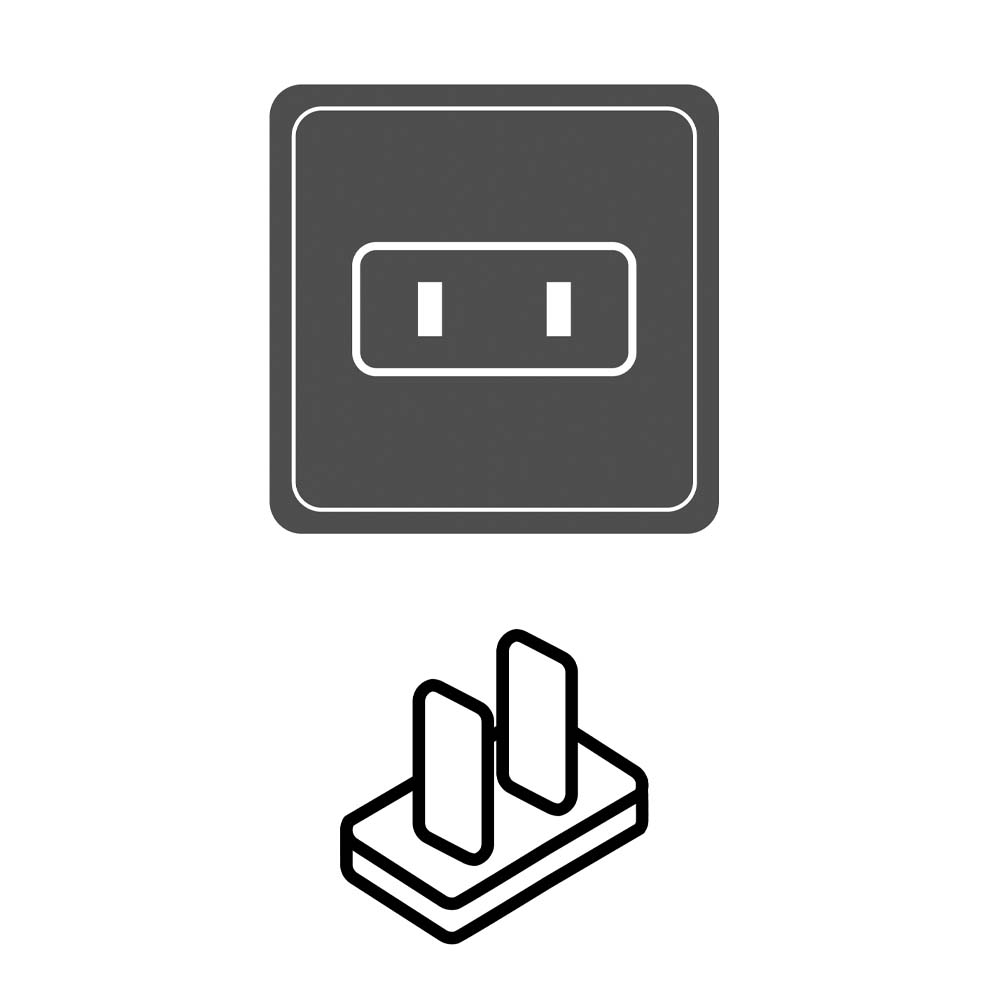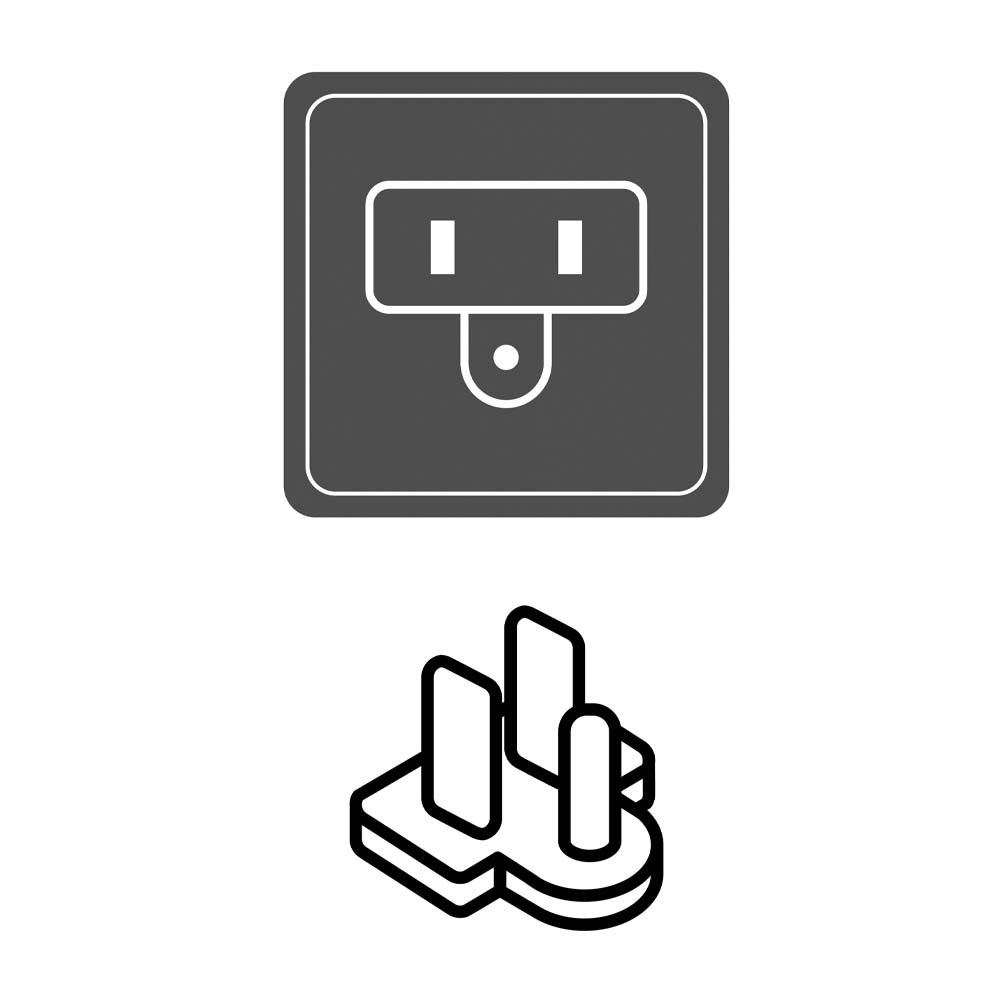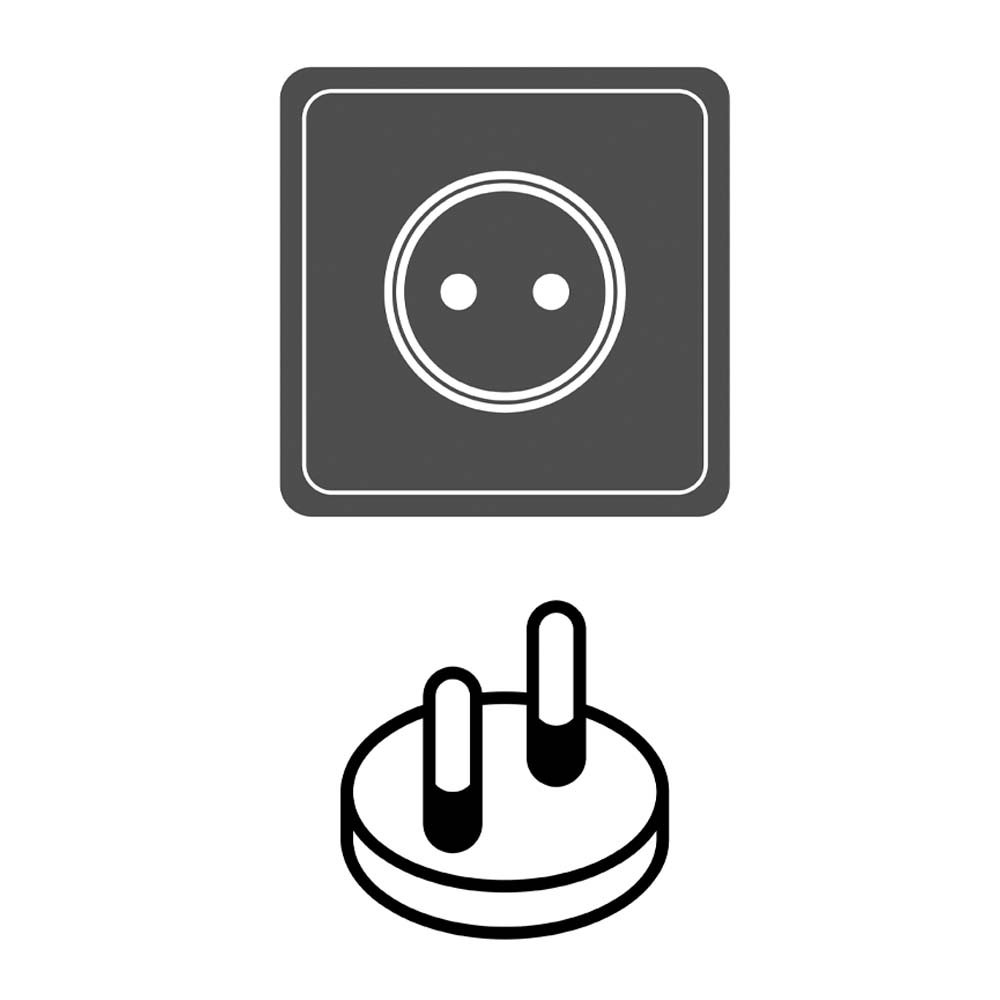Country Snapshot: Electrical Overview
Electric Current
Electricity is supplied in the Philippines at 220 volts AC, 60 Hertz (Hz).
Electric Plug
Electric plugs in the Philippines are of three types: “Type A” NEMA 1-15, “Type B” NEMA 5-15, and “Type C” Europlug CEE 7/16.
The Type A plug is an ungrounded plug with two flat parallel prongs spaced horizontally from each other. Type A plugs are generally polarized with one prong being wider than the other. It is most commonly used in North and Central American countries, Japan, some South American countries, the Caribbean Islands, and some Asian countries.
The Type B plug is a grounded plug with two flat parallel prongs spaced horizontally from each other and a third round grounding prong aligned below the flat prongs. It is most commonly used in North and Central American countries, Japan, and some South American and Southeast Asian countries.
The Type C Europlug is the most universally-used plug in the world, largely because it can be used with a number of different sockets. It is used in most continental European countries, some Middle Eastern countries, and many African, South American, and Asian countries. It is a narrow-headed plug with two round pins spaced horizontally from each other, with no grounding pin. See the illustration at right. Type C plugs are generally limited to devices and appliances that require 2.5 amps or less.
Electric Plug Adapter
If your electronic device or appliance does not use a Type A, Type B, or Type C plug, you may need an electric plug adapter. Plug adapters are available both online and in stores from travel companies, drugstores, and big-box stores. Note that an adapter allows a foreign device to plug into a Philippine outlet, but it does not change the electric voltage coming out of the Philippine outlet.
Using Home-country Appliances and Devices in the Philippines
The feasibility of using home-country electrical appliances and electronic devices in the Philippines depends on a number of factors, including the type of appliance or device and the voltage on which it operates.
Electrical Appliances
Electrical appliances are high-wattage items that use a mechanical motor or heating element (e.g., hair dryers, curling irons). If the appliance operates between 220–240 volts, 60 Hz, it may still require a plug adapter, but it will work in the Philippines without a voltage converter.
If the appliance operates between 110–120 volts, 60 Hz (as with appliances from most North and South American countries), it may require both an adapter and a voltage converter/transformer. The converter/transformer adjusts the power coming from the 220V outlet down so that the 120V appliance is not overloaded. You can purchase dual-voltage hair dryers and curling irons that work with multiple electric currents. See “Dual- or Multi-Voltage Devices” below.
Electronic Devices
Electronic devices are low-wattage items that use chips, circuits, or electronic motors (e.g., computers, printers, cell phones, and cameras). As with appliances, these devices may require use of a plug adapter. However, most of these devices run on dual- or multi-voltage chargers, which means they can operate using either 120V or 240V electric current. See “Dual- or Multi-Voltage Devices” below. If an electronic device is not dual- or multi-voltage and operates between 110–120 volts, it will require a transformer to adjust the power coming from a 220–240V outlet.
Dual- or Multi-Voltage Devices
Many electronic devices like cell phones, cameras, and computers have multi- or dual-voltage chargers that can operate on 100V current, 240V current, or something in between. Whether it is or dual- or multi-voltage will be indicated on the device’s power label. Dual-voltage is symbolized by a slash between the numbers, 120V/240V, meaning it will operate on either of the two specific voltages. Multi-voltage is symbolized by a dash between the numbers, 100V–240V, meaning it will operate on any voltage between 100V and 240V.
If an electronic device is either dual- or multi-voltage, a voltage converter or transformer is not necessary (though a plug adaptor may still be).
Converters
Converters are used only for high-wattage electrical appliances with mechanical motors or heating elements (e.g., hair dryers and curling irons). Electrical appliances that require short-term or sporadic usage generally use converters.
Transformers
Transformers are used for both high-wattage electrical appliances as well as low-wattage electronic devices that use electronic chips or circuits, such as computers and printers. Transformers are typically used for items requiring one or more hours of continual usage.
Copyright © 1993—2025 World Trade Press. All rights reserved.

 Philippines
Philippines 

